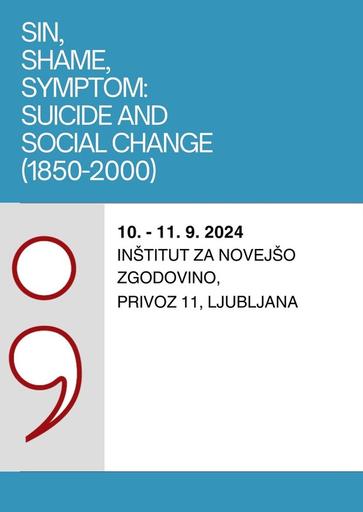/
Dogodki
/
Konference
Suicide prevention and first aid in Fin-de-Siècle Vienna


To delo avtorja Alexander Obermueller je ponujeno pod Creative Commons Priznanje avtorstva-Nekomercialno-Deljenje pod enakimi pogoji 4.0 Mednarodna
Datoteke (1)
Opis
Suicide prevention has been a crucial concern for public health in nineteenth-century Vienna. Organizations like the Viennese Voluntary Ambulance Association (Wiener Freiwillige Rettungsgesellschaft), founded in 1882, took suicides as their raison d’être and highlighted the fact that saving lives meant preventing suicides. These early first responders worked at the intersection of both public health and order. While providing first aid and prehospital medical care, they interacted not only with city dwellers who attempted suicide but with journalists, police, physicians, and psychiatrists. Because first responders were often the first ones at the scene, their assessment of what had animated a suicide held particular significance. City officials also relied on the VVAA’s case reports to get a sense of how frequent suicide occurred in turn-of-the-century Vienna. In line with the “transformative evolution of the perception of individuals contemplating suicide, transitioning from being branded as criminals and sinners to being regarded as patients”, first responders approached suicides from varying perspectives. An all-male organization, the VVAA staff often interpreted suicides along gendered lines. They also held significant sway over the decision to declare a person who had attempted suicide mentally ill. Yet, first responders also depended on suicides. They touted their success in preventing suicides as proof for their professionalism. In sum, first responders occupied an important role in the prevention and interpretation of suicides in the Habsburg monarchy’s capital. Using VVAA case records, annual reports, newspapers, and medical journals and building on existing scholarship (Leidinger 2012; Macho 2017), I trace first responders influence on the evolution of suicide between 1882 and 1914.
Metapodatki (12)
- identifikatorhttps://hdl.handle.net/11686/71070
- naslov
- Suicide prevention and first aid in Fin-de-Siècle Vienna
- avtor
- Alexander Obermueller
- soavtor
- Dragica Čeč (mod.)
- predmet
- samomori
- preventiva
- Dunaj
- 19. st.
- opis
- Suicide prevention has been a crucial concern for public health in nineteenth-century Vienna. Organizations like the Viennese Voluntary Ambulance Association (Wiener Freiwillige Rettungsgesellschaft), founded in 1882, took suicides as their raison d’être and highlighted the fact that saving lives meant preventing suicides. These early first responders worked at the intersection of both public health and order. While providing first aid and prehospital medical care, they interacted not only with city dwellers who attempted suicide but with journalists, police, physicians, and psychiatrists. Because first responders were often the first ones at the scene, their assessment of what had animated a suicide held particular significance. City officials also relied on the VVAA’s case reports to get a sense of how frequent suicide occurred in turn-of-the-century Vienna. In line with the “transformative evolution of the perception of individuals contemplating suicide, transitioning from being branded as criminals and sinners to being regarded as patients”, first responders approached suicides from varying perspectives. An all-male organization, the VVAA staff often interpreted suicides along gendered lines. They also held significant sway over the decision to declare a person who had attempted suicide mentally ill. Yet, first responders also depended on suicides. They touted their success in preventing suicides as proof for their professionalism. In sum, first responders occupied an important role in the prevention and interpretation of suicides in the Habsburg monarchy’s capital. Using VVAA case records, annual reports, newspapers, and medical journals and building on existing scholarship (Leidinger 2012; Macho 2017), I trace first responders influence on the evolution of suicide between 1882 and 1914.
- založnik
- Inštitut za novejšo zgodovino
- datum
- 11. 09. 2024
- tip
- video
- jezik
- Angleščina
- jeDelOd
- pravice
- licenca: ccByNcSa
